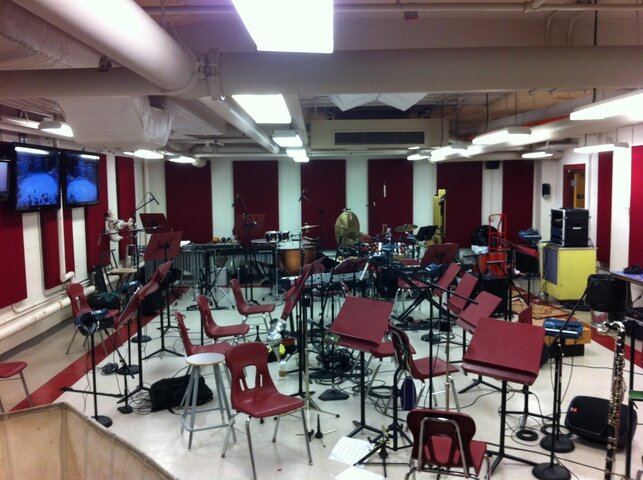Good points, but some of them apply to either a 23'x14' pit or 24'x12' room as with 24 musicians plus a conductor, and assuming that you can actually use all of the floor space, that equates to about 11.5 square feet per person for the room and 13 square feet per person for the pit, both of which are significantly less area than is recommended for that purpose.I have mixed a number of live broadcasts from a studio about that size. A room that small will not provide you with good sound for more than about 6 musicians because reflections and lack of physical separation will cause a lot of bleed into the mics. Drums and brass will make life difficult. Any large glass surface will make it that much worse. Worse yet, you'd need to do all monitoring with headphones, which makes monitor mixing very critical.
No way you would get 24 musicians in there and individually mic the instruments. For a big group, the best you could do would be a carefully arranged stereo pair and a few spot mics, and then you would be totally reliant on the acoustical properties of the room. The acoustic design of that room will be crucial, and it will take a professional designer with a large budget to make it work.
Also consider that the room will need one heck of an HVAC system to handle the heat load of all those people, and it will have to be quiet which is not easy or affordable. If the HVAC isn't done well, you'll have bad sound, unhappy musicians, and wood instruments that won't stay in tune, especially a piano.
Wherever you locate the orchestra there may also be related life safety and ADA considerations. Is the space rated for that use and occupancy? Are there appropriate exit paths? Is the space accessible? There may also be practical considerations such as access for instruments (can you get timpanis, a piano, etc. to and from and into and out of the space), sound isolation, background noise levels, the relationship to restrooms and so on. Whether it is a pit or a remote room, just because there is a space does not necessarily mean it can be used or will be practical to use as a space for an orchestra or ensemble to perform.



